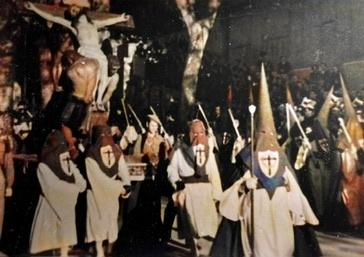How do Mallorcan religious practices reflect the mix of Christian and Muslim traditions from its history?
Similar Topics
mallorcan religious practices
christian and muslim
muslim rule mallorca
christian reconquest
moorish design elements
mallorcan festivals
religious cultural fusion
mallorca religious coexistence
Mallorcan religious practices offer a fascinating glimpse into the island’s rich cultural history, where Christian and Muslim influences have intertwined over centuries. Originally under Muslim rule for several centuries before the Christian reconquest in the 13th century, Mallorca retains subtle traces of Islamic spirituality woven into its predominantly Christian traditions. The legacy of Muslim presence is reflected not only in the architectural styles of many religious buildings but also in certain ritualistic aspects and cultural attitudes towards spirituality. While the dominant faith today is Roman Catholicism, the island’s churches and cathedrals frequently incorporate Moorish design elements, such as horseshoe arches and intricate tile work, highlighting a visual blend of religious art and symbolism.
Beyond architecture, some religious festivals and practices suggest an undercurrent of shared cultural memory. Palm Sunday celebrations, key in Mallorcan Christian observance, have been noted to bear similarities to ancient Islamic festivals, particularly in the way natural elements like palm fronds and olive branches are venerated. Additionally, certain prayers and communal gatherings showcase a family-oriented, communal nature characteristic of Islamic tradition, emphasizing hospitality and extended social bonds. This synthesis of traditions contributes to a unique form of religious expression that honors the island’s layered past without overtly blending doctrine.
Moreover, the coexistence of Christian and Muslim heritage can be perceived in the broader cultural respect for religious coexistence seen today on the island. While the dominant faith remains Catholic, Mallorca embraces its historical diversity through intercultural dialogue and the preservation of Muslim heritage sites alongside Christian landmarks. This dynamic enriches the spiritual landscape for both residents and visitors, offering a serene yet complex portrait of faith as a living legacy. The island's religious practices therefore serve as a quiet testimony to Mallorca’s history, reflecting centuries of cultural fusion and mutual influence.
Beyond architecture, some religious festivals and practices suggest an undercurrent of shared cultural memory. Palm Sunday celebrations, key in Mallorcan Christian observance, have been noted to bear similarities to ancient Islamic festivals, particularly in the way natural elements like palm fronds and olive branches are venerated. Additionally, certain prayers and communal gatherings showcase a family-oriented, communal nature characteristic of Islamic tradition, emphasizing hospitality and extended social bonds. This synthesis of traditions contributes to a unique form of religious expression that honors the island’s layered past without overtly blending doctrine.
Moreover, the coexistence of Christian and Muslim heritage can be perceived in the broader cultural respect for religious coexistence seen today on the island. While the dominant faith remains Catholic, Mallorca embraces its historical diversity through intercultural dialogue and the preservation of Muslim heritage sites alongside Christian landmarks. This dynamic enriches the spiritual landscape for both residents and visitors, offering a serene yet complex portrait of faith as a living legacy. The island's religious practices therefore serve as a quiet testimony to Mallorca’s history, reflecting centuries of cultural fusion and mutual influence.
🧩 Related Questions
Related Question
To what extent does the German translation market affect the availability of Catalan literature for German readers?
Related Question
What are some tips for preparing authentic Mallorcan all-i-oli at home?
Related Question
How has the perception of women's roles evolved in Mallorca over the years?
